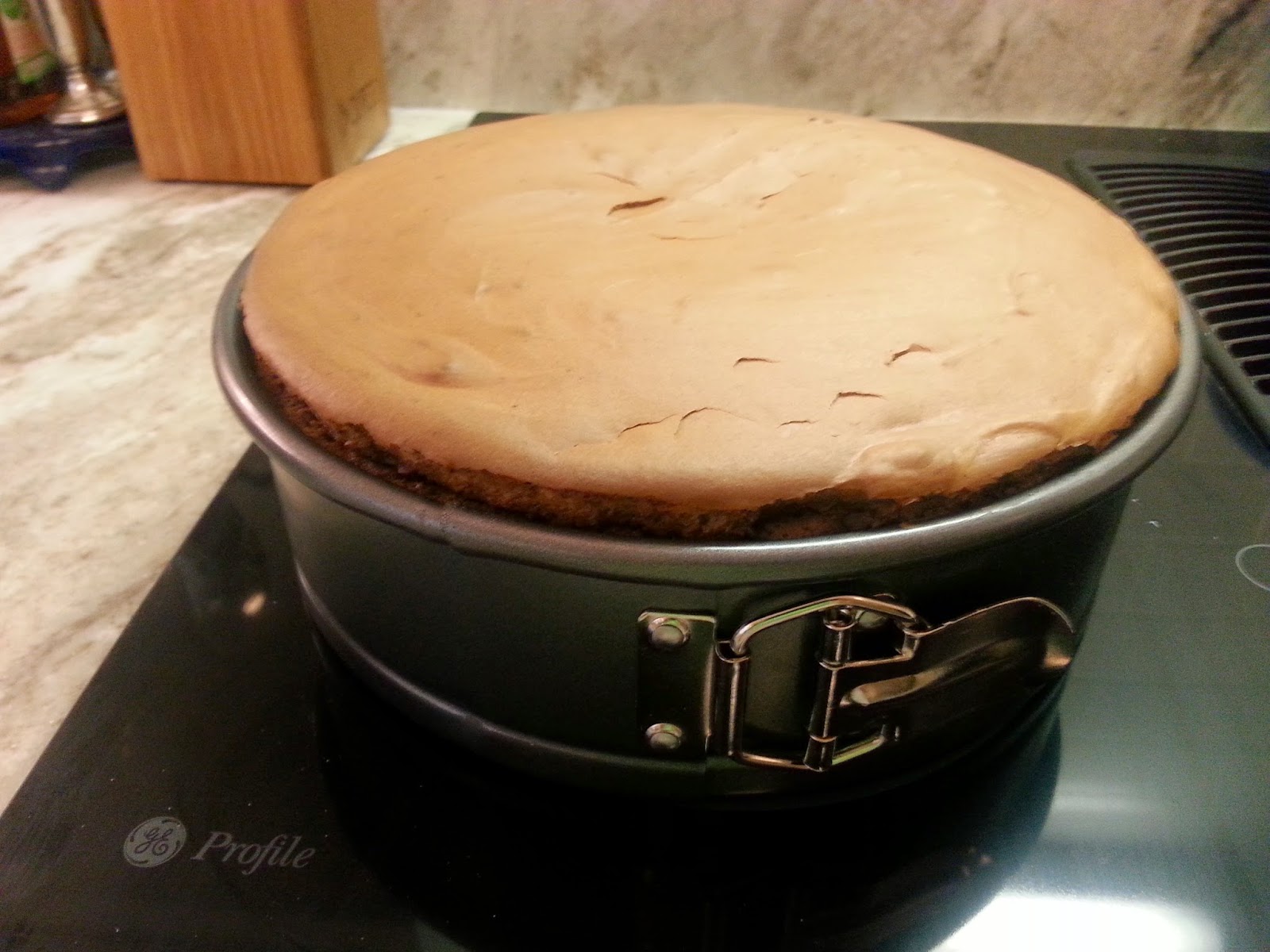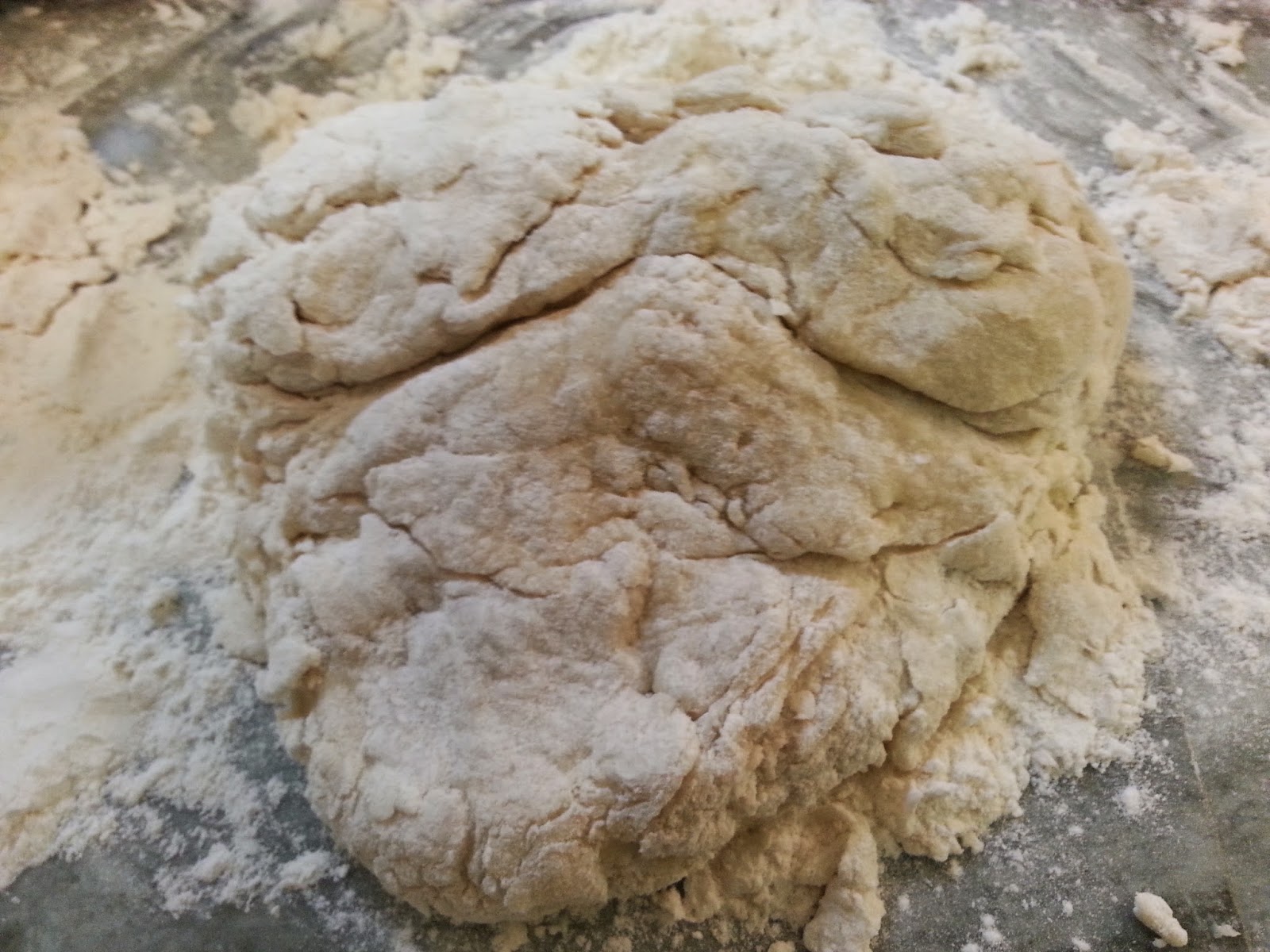What I did wrong:
1) Used corn syrup for the marshmallow fluff. It's in most fluff recipes, but the one without it tasted so much better. The hint of honey went well with the graham crackers, too.**
2) Unmolded the cheesecake too soon after removing it from the oven. This was actually a mistake I made this time and not last time, because I got impatient. The cheesecake will (and did) fall apart if it hasn't had enough time to cool. Its sides should be pulling away from the sides of the springform pan.
3) Overbaked the cheesecake. Again, it's a mistake I made this time. However, baking a cheesecake for longer than directed--as long as it isn't crumbly and dry--rarely has any adverse effect on the final texture or taste. I'm only including this because there is an "ideal" consistency that you'd like to see when taking it out of the oven.
Here is the recipe for the cheesecake itself. Instead of 24 chocolate wafer cookies and 1 tablespoon of sugar, I used 1 1/2 cups crumbled graham crackers and 2 tablespoons of sugar. I used Ghirardelli 60% bittersweet cocoa chocolate chips instead of the Scharffen Berger.
First, I preheated the oven to 350°F. I crumbled the graham crackers and mixed them with the sugar and melted butter. You can also use a food processor to mix everything together. I pressed that into the bottom of a springform pan and baked for ten minutes until set. I set that aside to cool.
I turned down the oven to 300°F. Then I beat the cream cheese, sugar, and cocoa powder together until fluffy.
I added the eggs one at a time, beating lightly after each one just until no streaks of egg remained. After the eggs are added, the consistency should be pudding-like and wobbly.
When the chocolate cooled but was still pourable and without lumps, I added it to the other ingredients along with the vanilla and mixed until everything was just blended.
I poured the mixture into the springform pan onto the crust and smoothed out the top. I baked it at 300°F for 20 minutes, then raised the temperature to 350°F and baked for another 40 minutes. Ideally, the edges should be puffy and cake-like with the middle still jiggling. Because the oven was running hot, the middle of mine formed a crust on top and puffed up slightly. Although it still wobbled when I moved it, so I didn't have to throw it out.
I then put the cheesecake back in the fridge to set. If you've made the cheesecake in the afternoon, let it set overnight. I made it in the morning, so I let it set in the fridge until the evening, about eight hours. Before taking it out, I made the marshmallow fluff.
I beat the egg whites and cream of tartar using a whisk attachment until soft peaks formed. Eggs whip up easier at room temperature, so if you know you'll be making the fluff, set the eggs aside on the counter earlier in the afternoon.
I combined the honey, water, and sugar in a small saucepan and clipped a candy/deep-fry thermometer to the side. I brought that to a boil over medium heat, and then let it cook until the thermometer reached 246°F.
I took the sugar mixture off the heat, and while beating with the whisk on the lowest setting, I slowly poured it into the beaten egg whites. I added the vanilla and beat on high for about seven minutes, until the fluff was thick, sticky, and shiny.
Finally, I removed the cheesecake from the fridge. Over time, the cheesecake should look like it has "fallen" and solidified. I spread a layer of the marshmallow fluff on top, crumbled another graham cracker on top of that, and sprinkled a few mini marshmallows over it. And there you have it: s'more cheesecake.

DEEMS THIS RECIPE:
Actually easier than pie, even though I probably made it more difficult for myself.
*Say that three times fast.
**I may or may not have just eaten some of the fluff with graham crackers.
***9" cakes fit perfectly on this plate, so even though it's a Christmas plate, I use it all year round when I have baked goods that need to go in the fridge; there isn't enough room for a cake stand in there.


















































